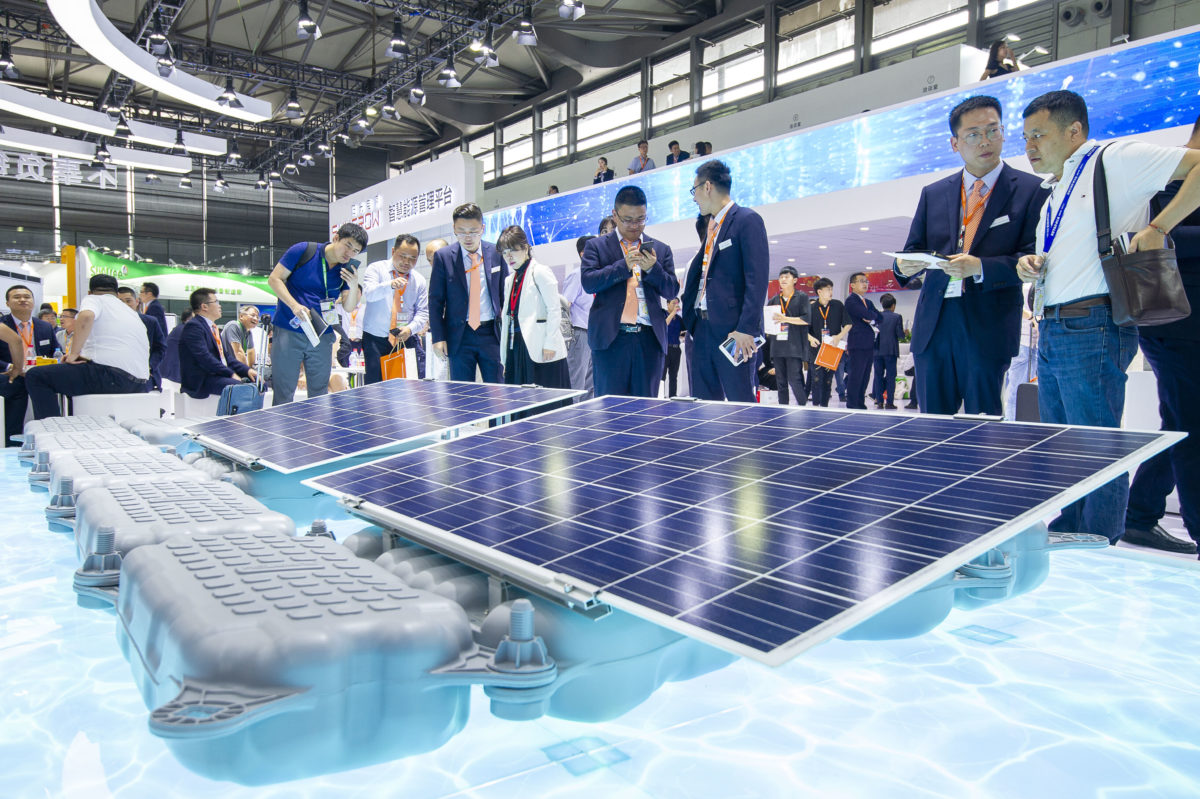Well, that didn’t take long.
Only days after the Chinese government announced a substantial withdrawal of support for solar PV on May 31, Bloomberg New Energy Finance (BNEF) responded with a report forecasting that global PV module prices would fall 34% this year, estimating that monocrystalline silicon modules would cost only $0.24 per watt by the end of the year.
The note also predicted “market panic” in the short term. Only a few weeks later both dynamics to appear to be at play, according to data by PVInsights and EnergyTrend.
As of Wednesday, PVInsights estimated average PV module prices had fallen to $0.278 per watt for standard multicrystalline modules, with multi-PERC modules coming in at an average of $0.337 per watt, and mono-PERC modules at $0.363 per watt.

These numbers represent declines from 0.3% to 2.1% over the course of the last week, with the greatest fall related to standard multicrystalline products.
PVInsights is not the only company reporting this information. Taiwan-based EnergyTrend is also reporting average prices from $0.295 per watt to $0.367 per watt, as of Wednesday, depending on the type of module. However EnergyTrend is seeing these numbers as the result of a much steeper weekly fall, describing price falls of up to 12.5%.
Again the steepest declines were for standard multicrystalline products.

Both of these appear to be global estimates, however in Europe, Martin Schachinger of pvXchange is also reporting collapsed prices. “After a lack of cheap modules due to artificially induced bottlenecks caused by the market regulations in the USA and in Europe, and the resulting stagnating prices, we now look forward to a module glut which inevitably causes prices to tumble,” notes Schachinger in a post on the pvXchange site (in German).
5-10% fall in U.S. prices
Current U.S. prices are higher, as global module imports are affected both by Section 201 tariffs, and Chinese product is subject to anti-dumping and countervailing duties imposed on solar cells and modules from Taiwan and China in 2012 and 2014.
However prices appear to be falling in the United States as well. Leni John, head of procurement at developer Strata Solar, estimates that U.S. module prices have fallen 5-10% over the last month, with greater declines for multicrystalline products than for monocrystalline.
This is in line with BNEF's previous forecast, as the company noted the liquid nature of global module supply, and ample capacity in Southeast Asia, Korea and Taiwan, to serve the U.S. market.
However Mr. John notes module price declines have not fully offset the impact of Section 201 tariffs, which he says are still affecting the market. “By no means are we back to where we were prior to the tariff being implemented,” Mr. John told pv magazine.
Additionally, as has been the case in the past, the anticipation of future price declines may lead developers and EPCs to wait on purchases, thus delaying projects.
This content is protected by copyright and may not be reused. If you want to cooperate with us and would like to reuse some of our content, please contact: editors@pv-magazine.com.



There seem to be certain marketing forces that tend to make fluctuating scenario, to put PV in the tune of stock exchange. The scientists/experts need to prepare a realistic scenario to provide a futuristic spectrum indicating the growth vs limitations., while economists carve the market potentials vis a vis the financial situation.
This article is from mid-2018. It’s now October 2018 as I write this. PLEASE INCLUDE GRAPHS. Data like this is not easily digestible, or communicable, to outside non-tech people without important graphs showing price declines, production capacity, inventory levels, and the relationships between mono and polycrystalline prices. Including module prices, not just cell prices, would also be helpful.
cost/unit by pv solar, csp solar
installation cost/kwh by pv solar, csp solar